United Nations Multidimensional Integrated Stabilization Mission in Mali
The United Nations Multidimensional Integrated Stabilization Mission in Mali (French: Mission multidimensionnelle intégrée des Nations unies pour la stabilisation au Mali, MINUSMA)[2] is a United Nations peacekeeping mission in Mali. MINUSMA was established on 25 April 2013 by United Nations Security Council Resolution 2100 to stabilise the country after the Tuareg rebellion of 2012.[3] It was officially deployed on 1 July, and has become the UN's most dangerous peacekeeping mission, with 209 peacekeepers killed out of a force of about 15,200.[4]
 | |
| Abbreviation | MINUSMA |
|---|---|
| Formation | 25 April 2013 |
| Type | Peacekeeping Mission |
| Legal status | Active |
| Headquarters | Bamako, Mali |
Head | Mahamat Saleh Annadi, Special Representative[1] |
Parent organization | United Nations Security Council |
| Website | Official website in English |
Apart from MINUSMA, there currently are two further international peace operations in Mali. These are the European Union missions EUCAP Sahel Mali and EUTM Mali.
History
In 2012, Tuareg and other peoples in northern Mali's Azawad region started an insurgency in the north under the banner of the National Movement for the Liberation of Azawad. After some initial successes and complaints from the Malian Army that it was ill-equipped to fight the insurgents, who had benefited from an influx of heavy weaponry from the 2011 Libyan civil war as well as other sources, elements of the army staged a military coup d'état on 21 March 2012.[5] Following the coup, the rebels made further advances to capture the three biggest cities in the north: Gao, Timbuktu and Kidal.[6] Following economic sanctions and a blockade by the Economic Community of West African States (ECOWAS) on the country, a deal, brokered in Burkina Faso by President Blaise Compaoré under the auspices of ECOWAS, was signed that would see Amadou Sanogo cede power to Dioncounda Traoré to assume the presidency in an interim capacity until an election is held.[7]
On 1 July 2013, 6,000 of a future total of 12,600 UN peacekeeping troops officially took over responsibility for patrolling the country's north from France and the ECOWAS' International Support Mission to Mali (AFISMA).[8] The group was expected to play a role in the 2013 Malian presidential election.[9] The force is the third largest UN peacekeeping force in operation in the world.[10]
Organisation and forces
Its headquarters are in the Malian capital, Bamako. Military intelligence will be evaluated by Force Headquarters U2- Intelligence Section.[11]
The force was led by Belgian Major General Jean-Paul Deconinck until 2 October 2018, after which he was succeeded by Lieutenant General Dennis Gyllensporre of Sweden.[12][13]
Current contributors are:[14]



.svg.png)
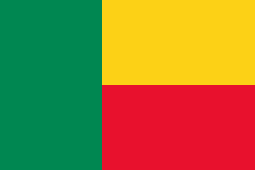


.svg.png)
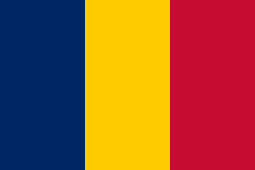

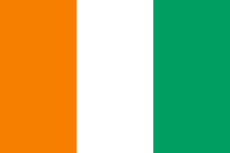




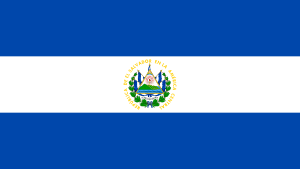



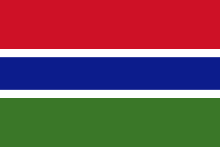



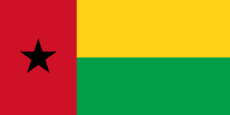



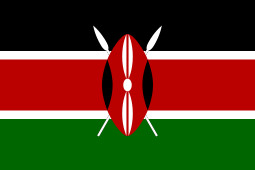

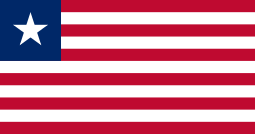

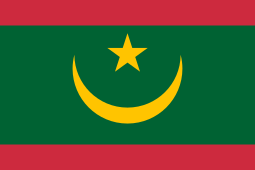
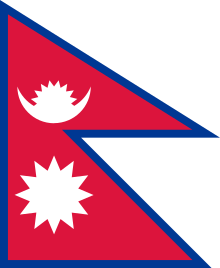

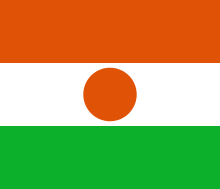
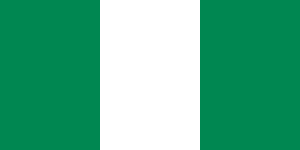

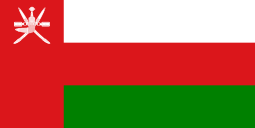



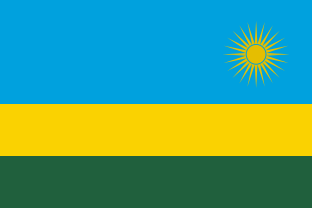
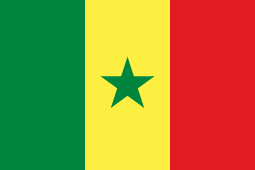
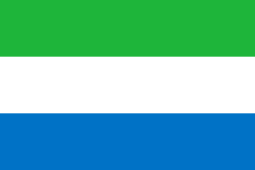


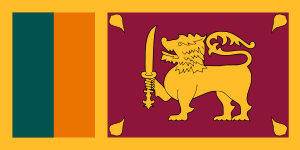


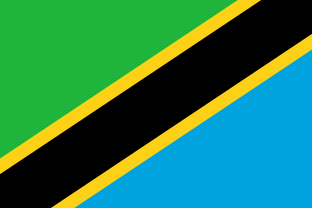




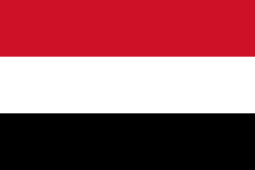
Incidents
In October 2013, a suicide bomber attacked the Chadian soldiers resulting in the death of two soldiers.[24]
On 13 December, two Senegalese peacekeepers were killed at a bombing outside the Malian Solidarity Bank in Kidal a day before the second round of the Malian parliamentary election, 2013.[25] In October 2014, 10 soldiers were killed—nine from Niger and one from Senegal near Gao and Kidal, respectively—bringing the total number of dead soldiers from the mission to 21 with dozens more wounded. It also preceded Malian Foreign Minister Abdoulaye Diop calling for the UNSC to send a rapid deployment force to the country claiming that there was an increase in drug traffickers and Islamist fighters. U.N. Peacekeeping chief Hervé Ladsous also spoke to the UNSC from Bamako, where he attend a memorial service for the dead soldiers. He added that a combination of factors has led to the increase in attacks on U.N. troops, including the drawdown of French forces and a perceived lack of Malian security forces, as such MINUSMA, being the main international presence in the area, was a target. He further noted that the UN was no longer working in a peacekeeping environment, but sought to increase protection of the mission's staff, equipment and bases.[26]
On 20 January 2019 the MINUSMA base at Aguelhok was attacked by militants. The attack was repelled but 10 Chadian UN peacekeepers were killed and a further 25 injured.[27][28] The militants had arrived on board a number of armed vehicles. Several of the attackers are said to have been killed.[29] Responsibility was claimed by Al-Qaeda in the Islamic Maghreb who stated that it was a retaliatory attack for the recent visit to Chad by Israeli prime minister Benjamin Netanyahu and the subsequent revival of Chad–Israel diplomatic relations.[29][30] UN Secretary-General António Guterres condemned the attack.[31]
On January 25th 2019 Three members of Sri Lankan Peacekeeping troops deployed in Mali were killed, while three Corporals were injured, when their armoured vehicle came under an Improvised Explosive Device (IED) attack, in the general area of Douentza in Mali.[32]
The United Nations reported that attacks in the northern Mali against a U.N. convoy killed three peacekeepers from Chad and injured four others. Secretary-General Antonio Guterres and UN spokesman Stephane Dujarric criticized the attacks, and said that they could account to war crimes as per the international law.[33]
As of March 31, 2020, 209 MINUSMA troops lost their lives[4].
References
- UN: MINUSMA Leadership
- "Mission multidimensionnelle intégrée des Nations Unies pour la stabilisation au Mali (MINUSMA), French language webpage on UN website for the mission". www.un.org. United Nations. 25 April 2013. Archived from the original on 29 October 2013. Retrieved 27 October 2013.
- "United Nations Multidimensional Integrated Stabilization Mission in Mali (MINUSMA)". www.un.org. United Nations. 25 April 2013. Archived from the original on 12 July 2013. Retrieved 3 July 2013.
- "MINUSMA". United Nations Peacekeeping.
- Look, Anne (25 March 2012). "Uncertainty Reigns in Mali". Voice of America. Archived from the original on 25 April 2012. Retrieved 1 July 2013.
- "Timbuktu bombarded as Mali constitution 'restored'". Hindustan Times. 1 April 2012. Archived from the original on 23 November 2012. Retrieved 1 July 2013.
- "Mali junta says power transfer 'within days'". Al Jazeera. Archived from the original on 17 March 2013. Retrieved 1 July 2013.
- (in Italian) Pineschi Laura, TUTELA INTERNAZIONALE DEL PATRIMONIO CULTURALE E MISSIONI DI PACE DELLE NAZIONI UNITE: UN BINOMIO POSSIBILE? IL CASO MINUSMA, Rivista di Diritto Internazionale 2018 , pag. 5 , fasc. 1
- "UN takes over Mali peacekeeping mission". Al Jazeera. Archived from the original on 1 July 2013. Retrieved 1 July 2013.
- The UN and Mali: Secure the Sahara, if you can Archived 6 March 2018 at the Wayback Machine, The Economist (6 July 2013).
- Rune Thomas Ege. "Norske soldater på plass i Mali". VG. Archived from the original on 14 September 2013. Retrieved 16 November 2014.
- "Secretary-General Appoints Major General Jean-Paul Deconinck of Belgium Force Commander, UN Multidimensional Integrated Stabilization Mission in Mali". UN.org. Archived from the original on 4 March 2017. Retrieved 23 October 2015.
- "Secretary-General Appoints Lieutenant General Dennis Gyllensporre of Sweden Force Commander of United Nations Multidimensional Integrated Stabilization Mission in Mali" (Press release). New York: United Nations. 30 August 2018. Archived from the original on 31 August 2018. Retrieved 31 August 2018.
- "UN MINUSMA facts". Archived from the original on 30 June 2017. Retrieved 29 June 2017.
- Ljunggren, David (16 March 2018). "Canada to send helicopters, troops to Mali: government source". Reuters. Archived from the original on 17 March 2018. Retrieved 17 March 2018.
Canada will send helicopters and support troops, including medical staff, to join a United Nations peace-keeping mission in Mali later this year, a senior Canadian government source said late on Friday.
- Carl, David (19 March 2018). "Canada to deploy aviation task force to Mali". Jane's Information Group. Archived from the original on 20 March 2018. Retrieved 20 March 2018.
The task force will provide tactical airlift and logistics for the UN Multidimensional Integrated Stabilization Mission in Mali (MINUSMA) by supplying two Boeing CH-147F (CH-47) Chinook and four Bell CH-146 (412EP) Griffon helicopters for armed escort duty. An unstated number of support personnel will also be deployed to the country.
- "Canadian peacekeepers arriving in Mali warned of isolation, weather, and UN red tape". National Post. 25 June 2018. Retrieved 15 July 2018.
- AirForces Monthly. Stamford, Lincolnshire, England: Key Publishing Ltd. September 2016. p. 26.
- "EMGFA". www.emgfa.pt.
- http://www.colombopage.com/archive_19B/Nov06_1573061823CH.php
- http://www.sundaytimes.lk/190317/news/mali-needs-us-341034.html
- (in French) En grande première : Une unité militaire aérienne tunisienne en mission de paix à l'étranger (Photo - Vidéo) Archived 19 January 2019 at the Wayback Machine
- "Archived copy". Archived from the original on 4 September 2014. Retrieved 3 September 2014.CS1 maint: archived copy as title (link)
- "UN troops killed in Mali suicide attack". Archived from the original on 23 September 2014. Retrieved 16 November 2014.
- "Car bomb kills UN peacekeepers in Mali". Archived from the original on 23 September 2014. Retrieved 16 November 2014.
- "Mali Calls for Rapid Reaction Force to Quell Unrest". VOA. Archived from the original on 2 December 2014. Retrieved 16 November 2014.
- "UN peacekeepers killed in Mali attack". 20 January 2019. Archived from the original on 21 January 2019. Retrieved 21 January 2019.
- "Mali: Ten UN peacekeeper killed in attack in Mali". Cable News Network. CNN. 21 January 2019. Retrieved 28 January 2019.
- "Mali: 10 UN peacekeepers killed in attack on Aguelhok base". The Defense Post. 20 January 2019. Retrieved 21 January 2019.
- "Peacekeepers killed in attack on UN northern Mali base". France 24. 20 January 2019. Archived from the original on 21 January 2019. Retrieved 21 January 2019.
- "Mali: Al-Qaeda claims responsibility for the Aguelhok attack | The North Africa Journal". North Africa Journal. Retrieved 21 January 2019.
- http://www.ft.lk/news/Three-Sri-Lankan-soldiers-die-in-Mali-attack/56-671690
- "UN Says 3 Peacekeepers Killed, 4 Wounded in Mali Attacks". The New York Times. Retrieved 10 May 2020.